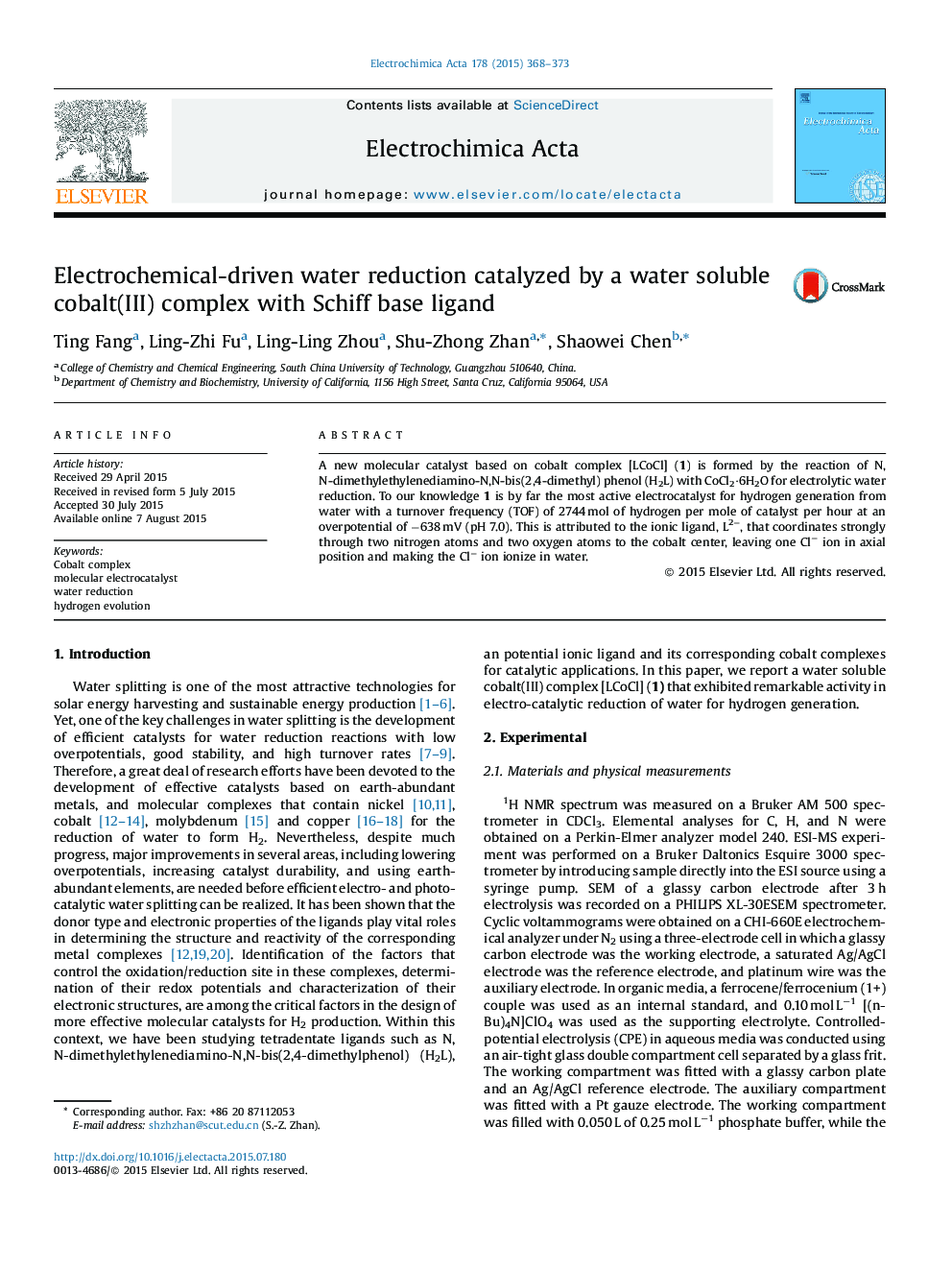| Article ID | Journal | Published Year | Pages | File Type |
|---|---|---|---|---|
| 183694 | Electrochimica Acta | 2015 | 6 Pages |
•Reaction of N,N-dimethylethylenediamino-N,N-bis(2,4-dimethylphenol) (H2L) and CoCl2·6H2O affords a cobalt (III) complex [LCoIIICl] 1.•1 can electrocatalyze hydrogen evolution from water with a turnover frequency (TOF) of 2744 moles of hydrogen per mole of catalyst per hour at an overpotential of −0.638 V.
A new molecular catalyst based on cobalt complex [LCoCl] (1) is formed by the reaction of N,N-dimethylethylenediamino-N,N-bis(2,4-dimethyl) phenol (H2L) with CoCl2·6H2O for electrolytic water reduction. To our knowledge 1 is by far the most active electrocatalyst for hydrogen generation from water with a turnover frequency (TOF) of 2744 mol of hydrogen per mole of catalyst per hour at an overpotential of −638 mV (pH 7.0). This is attributed to the ionic ligand, L2−, that coordinates strongly through two nitrogen atoms and two oxygen atoms to the cobalt center, leaving one Cl− ion in axial position and making the Cl− ion ionize in water.
Graphical abstractFigure optionsDownload full-size imageDownload as PowerPoint slide
